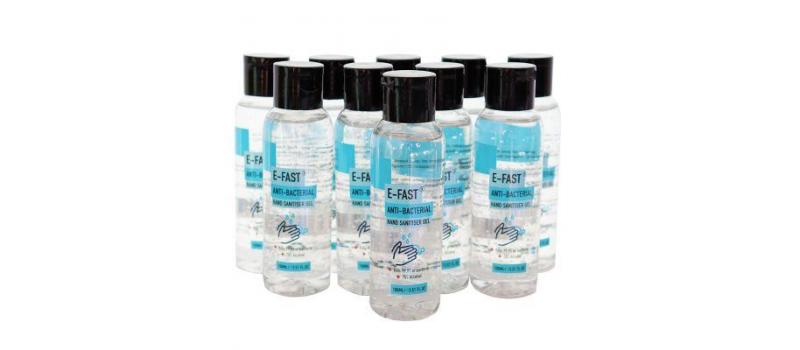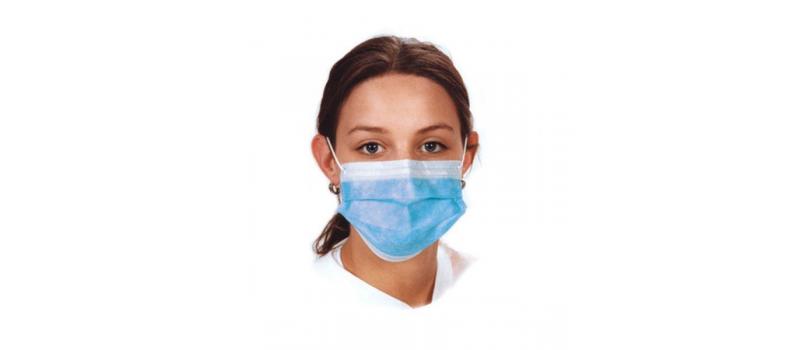While fogging machines are not a new invention, they rose to prominence during the recent pandemic. This is due to the fact they offer a speedy solution to disinfection for health services, government organisations and businesses alike.
We’ve tried to answer some of the most common questions about them, but if you’d like to speak to our sales team for help or advice, please get in touch.
What is a fogging machine?
The fogging machine (also called a fogger or fumigator) is a versatile piece of equipment that uses a fine spray to apply a disinfectant solution.
How does a fogging machine work?
The disinfectant applied through a fogging machine sanitises both surfaces and the air itself through micro-droplets of disinfectant that remain on surfaces for an extended period of time, providing long-lasting protection.
The fogger uses pressure to create a fine mist (or fog) which is applied to the targeted area, the spray density typically being moderated by a manual valve to ensure the optimum effect. The fine fog can reach into corners and difficult areas, and may also penetrate porous surfaces.
What can I use a fogging machine for?
Fogging machines have become an essential piece of equipment for effectively sanitising large internal spaces, common touch surfaces and hard-to reach areas following the COVID-19 outbreak.
Due to its speed and capabilities, this method is more cost-effective than traditional cleaning and doesn’t require any furniture or equipment to be moved around for the treatment to work.
Where can I use a fogging machine?
They are versatile for use in a wide range of environments including offices, waiting rooms, classrooms, gyms, holiday homes and shopping centres. They are particularly popular with public transport providers and vehicle hire companies to disinfect vehicles when returning to base or after each hire use.
What do I need to put in a fogging machine?
We strongly advise that you use an antiviral disinfectant and sanitiser that has been tested against viruses and other harmful bacteria. We supply BAC, DDAC and Hypochlorous Acid (HOCI) based disinfectant which have been tested extensively and proven to effectively kill a wide range of bacteria and viruses including Covid-19.
What is a ULV fogger?
ULV stands for ultra-low volume because of the low volume of fluid that is required to create enough fog to cover very large areas. ULV foggers are essentially a cold fogging machine as they don’t use heat. Instead, the machine uses large volumes of air at low pressure to convert a liquid into droplets that can then be dispersed into the atmosphere. The advantage that ULV foggers have over thermal foggers is that they allow you to control the particle size.
What should I look for when buying a fogging machine?
Most cold or ULV (ultra low volume) foggers can disperse dry and wet fog. Their nozzles allow you to regulate both the spray volume and droplet size. Dry fog usually has droplets that are 10 to 15 microns in diameter. This is because the droplets are so small that they create a seemingly dry fog.
On the other hand, a fog that has droplets that are 20 microns or larger in diameter is considered wet fog. This fog appears to be wetter and more like a mist than a fog. Dry fog is more suitable for smaller spaces, whereas wet fog offers greater practicality for covering larger areas due to the increased size of the droplets.

What is the best disinfectant to use in my fogging machine?
There are a number of options available that depend on usage areas or personal preference.
In office, business or food production settings, you may choose a chemical disinfectant like our BAC 5 Antibacterial and Antiviral Surface Disinfectant. These chemical solutions require the operator of the fogging machine to be equipped with PPE during their use.
In contrast, there are natural solutions available that have been especially developed for catering and educational environments, like our SHIELDme Antiviral Surface Disinfectant & Sanitiser. This chemical free alternative is a non-irritant, so it can be used on skin as a hand sanitiser too.
How much coverage will I get from my fogging machine?
Using the ‘wet fog’ setting (20 microns or larger), a deep clean covering 20 square metres would take approximately one minute and use a liquid consumption of 350ml.
How often do I need to apply the disinfectant in order to ensure that there are no viruses or bacteria on the surface?
This depends on the type of disinfectant used. We supply BAC, DDAC and Hypochlorous Acid (HOCI) based disinfectant which has been tested extensively and proven to effectively kill a wide range of bacteria and viruses including Covid-19. Below are the rate of application guidelines for each disinfectant:
BAC 5 Antibacterial & Antiviral Surface Disinfectant: When sprayed, it remains on surfaces for up to 30 days, providing long-lasting protection (even if the surface is contaminated during this period).
SHIELDme Antiviral Surface Disinfectant & Sanitiser: As long as no contamination comes again in contact with the same surface. Studies have demonstrated that continual use of the product steadily reduces the “bounce back” rate of contamination. This leads to a reduced level of risk.
Sychem Control Surface Cleaner & Disinfectant: Testing of the solution revealed that the level of sanitisation persisted, despite potential recontamination through normal day-to-day use, for three to five weeks after application.
Does the fogging machine leave particles hanging in the air?
The droplets are dispersed into the air, float then slowly fall, disinfecting every surface as well as cleaning the air itself, resulting in a hygienically clean space.
Do I need to remove all electrical equipment before fogging an office space or similar?
All electrical appliances should be turned off and disconnected before the fogging process takes place. There is no requirement to physically remove any electrical equipment from the area or space prior to fogging.
After fogging has been carried out, when is it safe to re-enter the treated area?
The recommended time periods for each disinfectant are as follows:
– BAC 5 Antibacterial & Antiviral Surface Disinfectant: Allow a minimum of 30 minutes before allowing personnel into the treated area.
– SHIELDme Antiviral Surface Disinfectant & Sanitiser: Allow a minimum of 5 minutes before allowing personnel into the treated area.
– Sychem Control Surface Cleaner and Disinfectant: Allow a minimum of 30 minutes before allowing personnel into the treated area.
Remember to check there is no airborne activity before allowing personnel back into the treated area.
When fogging the area will the areas be wet for any length of time?
After you have left the fog to dissipate, there shouldn’t be any wetness remaining. If there is any excess, it should be wiped off with a clean cloth.
As always, our knowledgeable and friendly team are available to answer any questions that you may have about these products on 01777 858009 or email sales@kingfisherdirect.co.uk
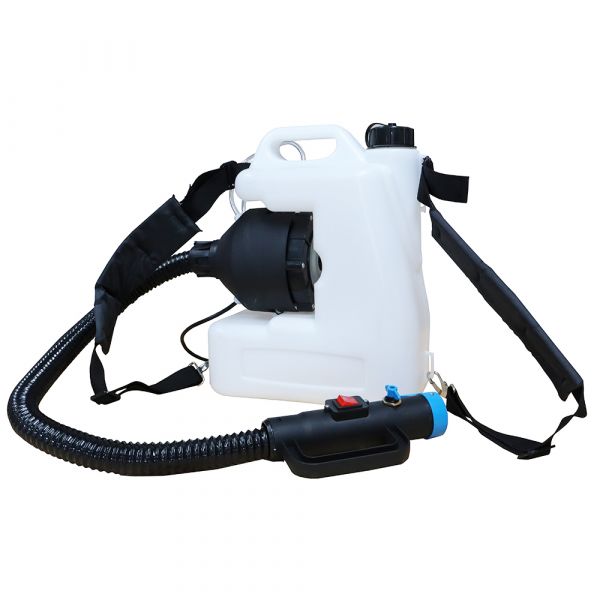 Chemical Disinfectant ULV Fogger Machine – 12 Litre Capacity
Chemical Disinfectant ULV Fogger Machine – 12 Litre Capacity
Was £469.99
NOW £299.00
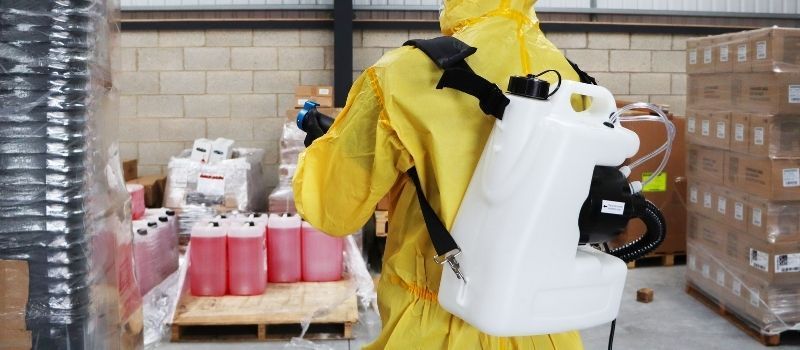
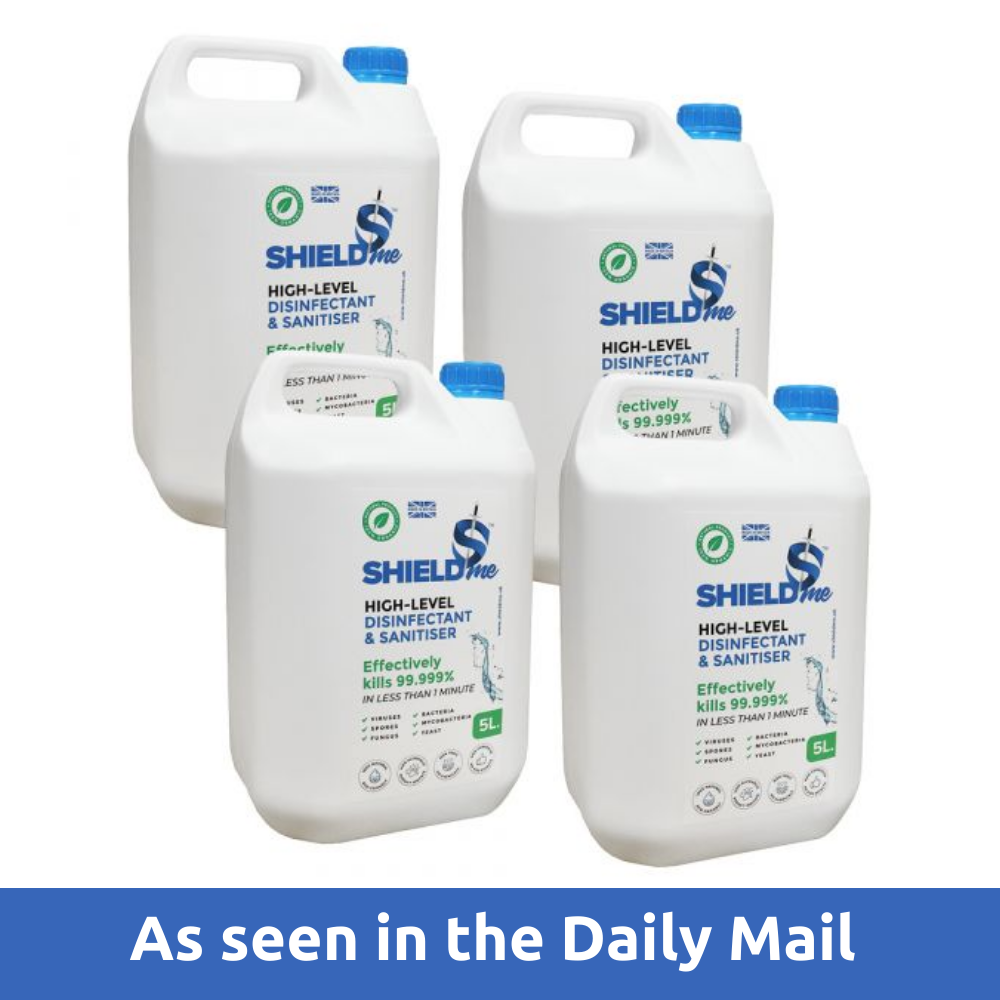 SHIELDme Surface Disinfectant & Sanitiser – 5 Litre – Pack of 4
SHIELDme Surface Disinfectant & Sanitiser – 5 Litre – Pack of 4